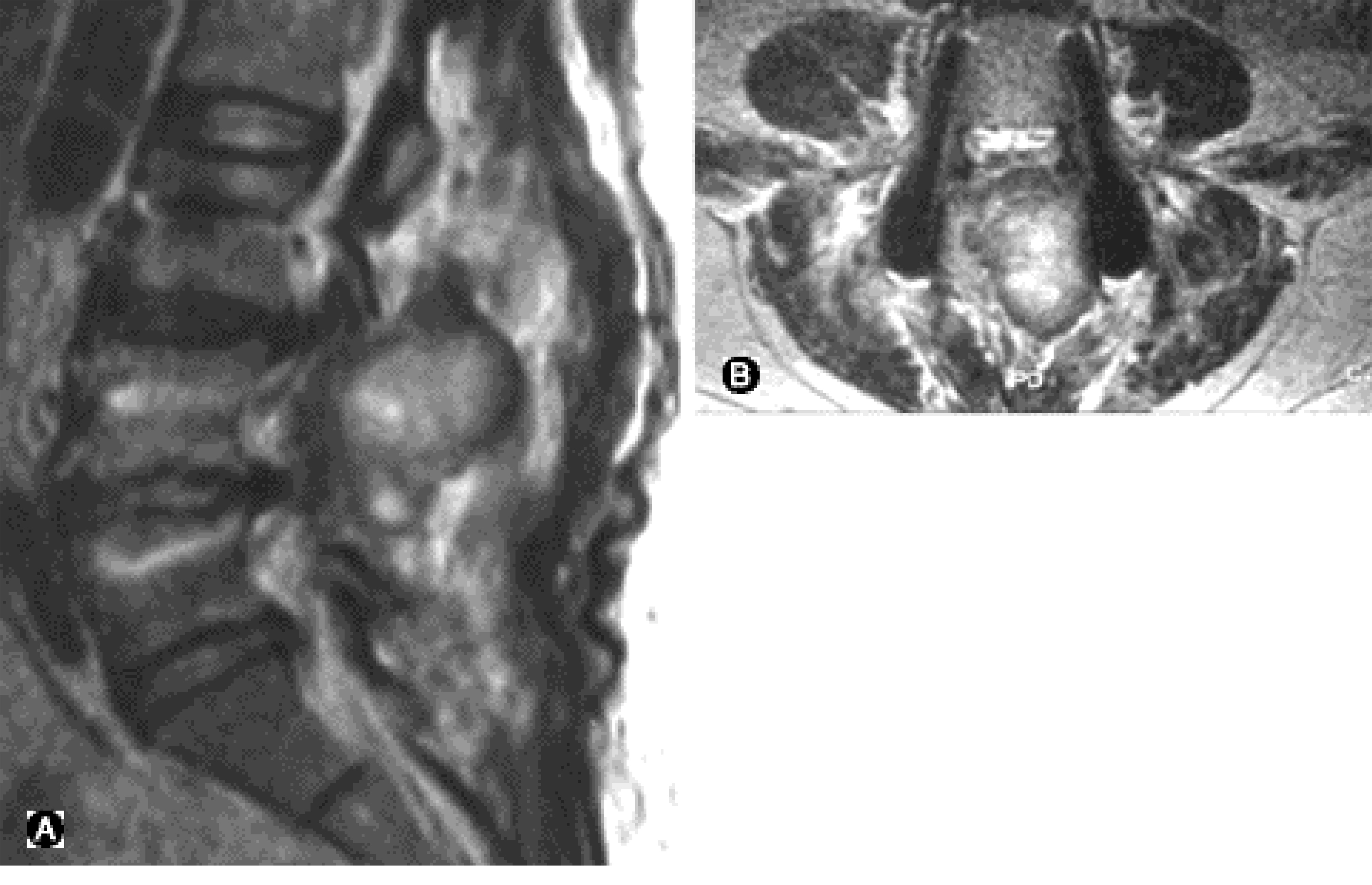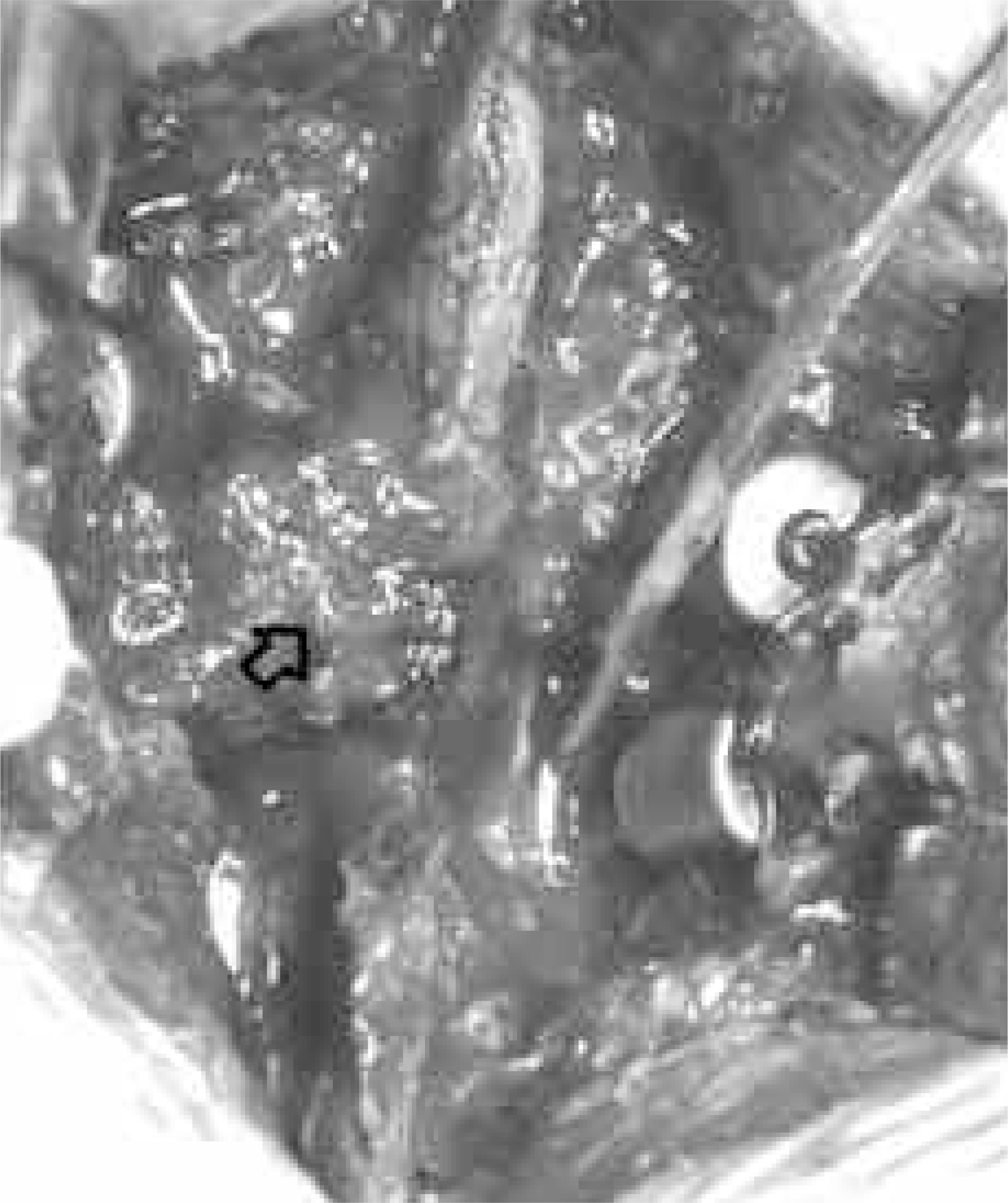J Korean Soc Spine Surg.
2004 Sep;11(3):154-160. 10.4184/jkss.2004.11.3.154.
Neurologically Symptomatic Epidural Hematoma after Lumbar Spine Surgery: Comparative Study for Risk Factors
- Affiliations
-
- 1Department of Orthopedic Surgery, Seoul Sacred Heart General Hospital, Seoul, Korea. adkajs@hanmail.net
- KMID: 1839986
- DOI: http://doi.org/10.4184/jkss.2004.11.3.154
Abstract
- STUDY DESIGN: Retrospective and controlled study
OBJECTIVES
To verify the risk factors, distinction of symptomatic and prognosis of the postoperative neurologically symptomatic epidural hematoma at the lumbar region. SUMMERY OF LITERATURE REVIEW: Even though an epidural hematoma is one of the well known causes of postoperative neuro-logical complications, the rarity makes it difficult to account for the causes of this phenomenon. MATERIAL AND METHODS: Eight patients who had a proven neurologically symptomatic epidural hematoma were reviewed. We analyzed the degrees of neurologic recovery according to the initial degree of the neurological deficit and the time to the hematoma evacuation. Two hundred four patients who underwent a lumbar operation during the months contemporary with the occurrence of each cases (ed note: I do not know what this means.) by the same surgeon, were selected as the control group.
RESULTS
Among the 2,951 patients, 8 patients (0.027%) developed such complication. Using a simple logistic regression test, an increased amount of bleeding, a prolonged operation time, a decreased platelet count before and after surgery, hypertension and previous cardiovascular disease were recognized as significant risk factors, but the statistical significance was lost in all factors by multiple logistic regression test. There was no significant correlation between the neurological recovery and initial neurolog-ical deficit or retardation before the hematoma evacuation.
CONCLUSIONS
Compressive epidural hematoma following lumbar spine surgery can cause serious neurological symptom. Significant risk factors were not demonstrated. Therefore, it can be developed in ordinary patients. All cases developed neurological symptom within the first 8 hours after surgery. Accordingly, cautious observation of the neurological changes at early period is important for detecting and treating such complication. The neurologically symptomatic epidural hematoma should be evacuated even in delayed cases, because neurological recovery can be expected.
MeSH Terms
Figure
Reference
-
1). Jackson R. Case of spinal apoplexy. Lancet. 1869; 2:538–539. (cited from Lauton MT, Porter RW, Heiserman JE, Jacobositz R, Sonntag VKH and Dickman CA: Surgical management of spinal epidural hematoma. Relationship between surgical timing and neurological outcome. J Neurosurg. 1995; 83:1–7. .).
Article2). Kou J, Fischgrund J, Biddinger A, Herkowitz H. Risk factors for spinal epidural hematoma after spinal surgery. Spine. 2002; 1(15):1670–1673.
Article3). Di Lauro L, Poli R, Bortoluzzi M, Marini G. Paresthe -sia after lumbar disc removal and their relationship to epidural hematoma. J Neurosurg. 1982; 57:135–136.4). Cabana F, Pointillart V, Vital JM, Senegas J. Postoperative compressive spinal epidural hematoma. 15 cases and a review of the literature. Rev Chir Orthop Reparatrice Appar Mot. 2000; 86:335–345.5). Scavarda D, Peruzzi P, Bazin A, et al. Postoperative spinal extradural hematoma. 14 cases. Neurochirurgie. 1997; 43:220–227.6). Kotilainen E, Alanen A, Erikintalo M, Helenius H, Vatonen S. Postoperative hematomas after successful lumbar microdiscectomy or percutaneous nucleotomy: a magnetic resonance imaging study. Surg Neurol. 1994; 41:98–105.
Article7). Mclaren AC, Bailey SI. Cauda equina syndrome: a complication of lumbar discectomy. Clin Orthop. 1986; 204:143–149.8). Foo D, Rossier AB. Preoperative neurological status in predicting surgical outcome of spinal epidural hematoma. S Neurology. 1981; 15-5:389–401.9). Tarlov IM, Herz E. Spinal cord compression studies. Arch Neurol Psychiatry. 1954; 72:43–59. (cited from Foo D, Rossier AB: Preoperative neurological status in predicting surgical outcome of spinal epidural hematoma. S Neurology. 1981; 15-5:389–401.
Article10). Lawton MT, Porter RW, Heiserman JE, Jacobositz R, Sonntag VKH, Dickman CA. Surgical management of spinal epidural hematoma. Relationship between surgical timing and neurological outcome. J Neurosurg. 1995; 83:1–7.
Article11). Ko Y, Kakiuchi M. Extended posture of lumbar spine precipitating cauda equina compression arising from a postoperative epidural clot. J Orthop Sci. 2001; 6:88–91.
Article
- Full Text Links
- Actions
-
Cited
- CITED
-
- Close
- Share
- Similar articles
-
- Spontaneous Lumbar Spinal Epidural Hematoma without Rist Factors: A Case Report
- Spontaneous Spinal Epidural Hematoma Mimicking Lumbar Disc Herniation
- Symptomatic Extensive Thoracolumbar Epidural Hematoma Following Lumbar Disc Surgery Treated by Single Level Laminectomy
- Hemorrhagic Complication after Spine Surgery
- Drainage of an acute spinal epidural hematoma that developed without risk factors in the thoracic spine using epidural needle: A case report



